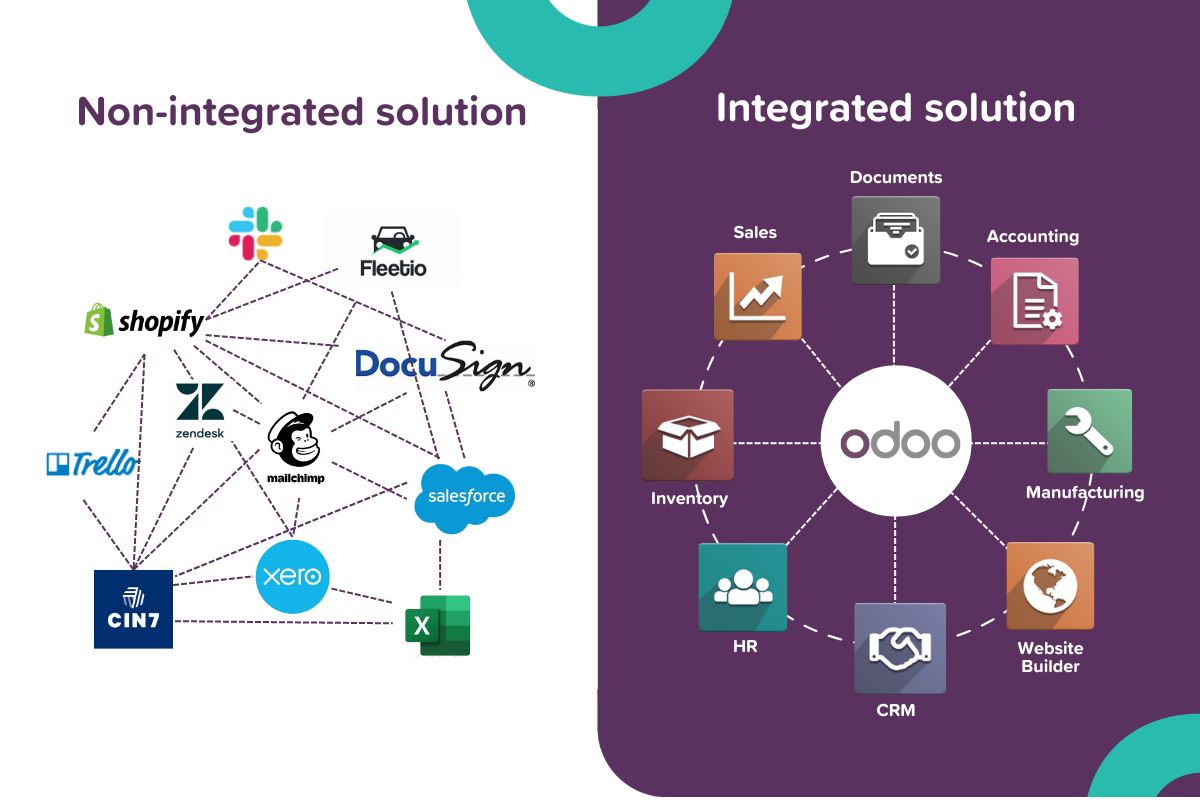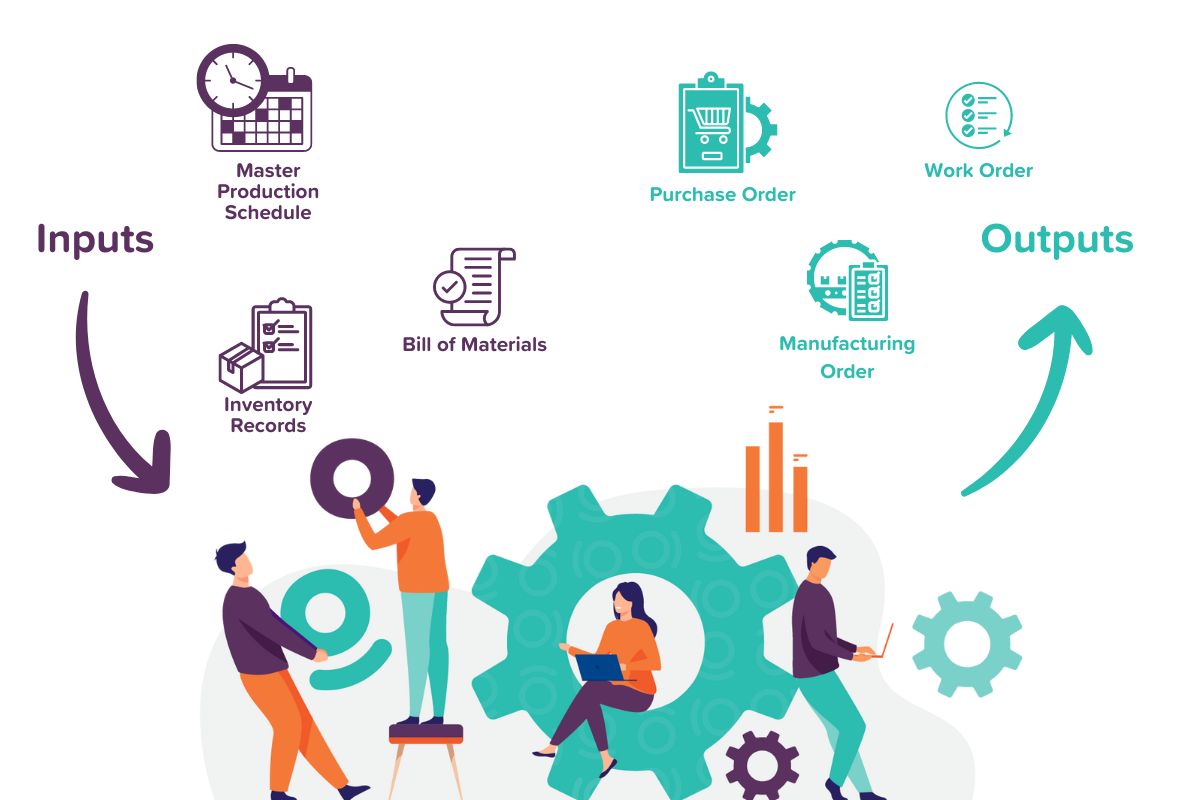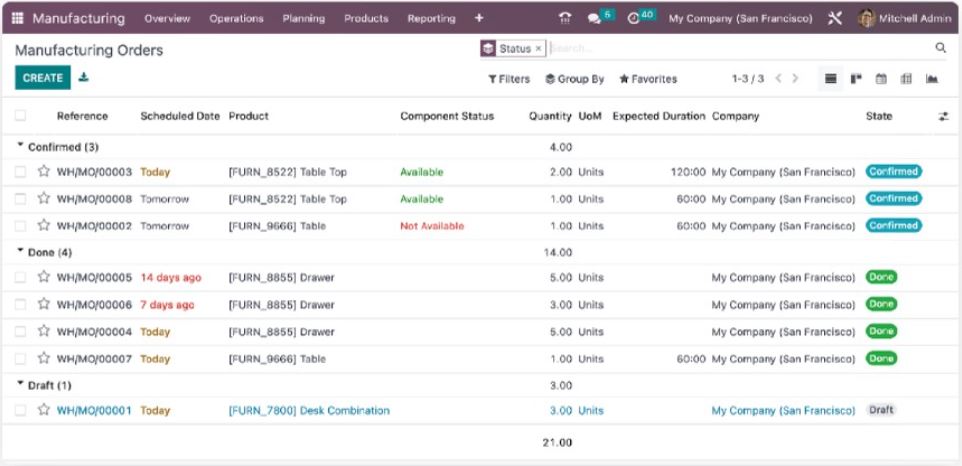MRP NZ
Wedoo help manufacturing SMEs to drive improved operational efficiencies throughout their business by helping them streamline and automate processes through a suite of powerful business management tools, including MRP software.
There has been much talk about the need for manufacturers to adopt digital technologies. However, many leaders of SMEs still find technology intimidating, and consider it out of their reach both from a perspective of usability and affordability.
Wedoo works to prove that implementing an MRP system can be considered the first step on a manufacturing SME's Industry 4.0 journey. This is often the catalyst for getting departments across the organisation to collaborate, generate real-time information, and ready themselves for an ERP implementation.
In this post, we do a deep dive on MRP, how it works, and what can be expected from Odoo's MRP module.
What is MRP?
Today, MRP includes core scheduling tools and inventory management while also adding functionality that forecasts demand, manages capacity, boosts quality, and more. This actually defines the software as MRP ii, however this is largely now considered the norm in modern MRP systems so no longer requires the 'ii'.
The process of MRP follows three main steps which involve:
- inventory control and monitoring current levels of raw materials and components,
- identifying when materials need to be replenished to meet inventory requirements,
- and scheduling material purchases and manufacturing activities.
MRP takes into account external demand and internal production capacity to ensure smooth operations. It calculates the quantity and timing of materials required for production based on a production schedule and other factors such as lead times, inventory levels, and demand forecasts.
The ultimate goal of MRP is to make sure that the right materials are available at the right time in the right quantities, while minimising inventory holding costs and avoiding stockouts. By automating the materials planning process, manufacturers can optimise their production schedules, improve delivery performance, and reduce waste and excess inventory.
ERP versus MRP - what is the difference?
The difference between ERP and MRP is significant. ERP (or Enterprise Resource Planning) is a holistic business management system that allocates resources and streamlines processes across the entire organisation. An ERP allows for all departments to be run from a single source of data, seamlessly integrated across HR, Finance, CRM, Marketing, and Manufacturing.
MRP on the other hand, is a manufacturing specific tool that is generally considered a sub-set of an ERP. It specifically helps manufacturers order and plan for manufacturing materials.
Many manufacturers will begin with an MRP to run their operations, scaling up to a more holistic ERP system as the business grows. Historically, ERP software has not been accessible to SME's due to high total cost of ownership. Today, Odoo's suite of business management application are available for a single per user per month fee. This brings the subscription costs of an entire ERP system to a price that is comparable to running ONE standalone software app.

Open Source MRP Software
By using open source MRP software, the source code is accessible which allows company’s (or their chosen implementation partners) to easily modify the software to meet their specific needs. This flexibility allows you to save time and money by customising the software instead of paying for more expensive proprietary solutions. Open source MRP software also promotes collaboration and innovation within the development community, leading to continuous improvements and updates to the software.
How does MRP work?
MRP uses an essential list of input data from the Master Production Schedule (MPS), Bill of Materials (BOM), and inventory records to answer three main questions:
What items are needed?
How many items are needed?
When are those items needed?
Using the essential input data, the MRP determines the materials assembly processes needed to produce orders on time.
What are MRP inputs?
The essential data that is relied on by an MRP includes:
Master Production Schedule (MPS): A plan that shows what needs to be manufactured, the quantity, and timing. The MPS is based on factors such as customer demand, production capacity, and inventory levels, and it helps to ensure that the right products are produced in the right quantities at the right time. The MPS serves as the basis for creating a detailed production plan, which in turn guides the procurement of materials and the scheduling of production activities.
Bill of Materials (BoM): A list of all the raw materials, components, and assemblies required to manufacture a product. It serves as a comprehensive recipe for a manufacturer to produce a product by specifying the type, quantity, and quality of each component. The BOM provides essential information for the procurement of materials and planning of production activities.
Inventory Records: The real time status of all items in inventory, including raw materials and finished items on hand or on order.
MRP as a holistic system
For smaller manufacturers, managing the inputs and outputs of the business with spreadsheets may have sufficed. For growing manufacturers however, the quality of procurements decrease, statistically, when material purchases increase in volume. With an increase in employee numbers also comes an increase in the risk of human error.
At Wedoo, we usually meet manufacturers once they are on the path of needing standardisations and streamlined processes. Small, persistent errors have been adding drag on the functionality of their existing system and they're looking to ensure they can scale operations.
What are the two best features of Manufacturing MRP systems?
Incredibly tight control over materials, schedules, and internal systems in the manufacturing process. This has a powerful, positive compounding effect on the day-to-day operations of the business.
Quick and flexible adaptation to new/emerging needs as the business grows while minimising administrative tasks. A good MRP system is often integrated with other core business functions outside the manufacturing process (such as accounting, sales, purchase, CRM, etc) to offer more streamlined, “big picture” control over the business as a whole.
Today, most companies start with an MRP as their core working model and then expand into a more holistic model as the business matures.
What are the challenges of using MRP?
- Data Integrity: Although using an MRP system has plenty of advantages, a potential disadvantage is that, like most complex systems, MRPs carry a heavy reliance on the accuracy of input data. Data integrity is crucial for effective MRP implementation, as errors in the MPS or BoM data can lead to significant discrepancies in generated outputs. Therefore, maintaining careful data accuracy is an indispensable part of setting up a strong MRP system. Exchanging information with other departments like Sales, using barcode scanners, and making sure the MRP system is set up correctly can help mitigate data errors.
- Time and Resources: Onboarding onto a new system often requires transferring historical data, and workflows may need to be re-established. However, costs are mainly associated with the beginning stages of implementation, and ROI is realised pretty quickly. Once a business has successfully adapted its operation to the MRP system, it can then dedicate resources toward executing its business goals at scale.
- Clearly Defined Business Goals: Businesses need to identify areas that can benefit from an MRP, and the MRP needs to have functionalities that can execute the company’s strategy. Functionalities alone can be a touchy subject, since most businesses business owners and operators believe that their needs require way more custom development than what is necessary. With those beliefs comes a hefty price tag, as more custom development generates risk in creating a more brittle system, which then weakens the entire MRP model itself. In software development, we call this the trap of waterfall design, so it's recommended that decision makers pick a software that has customisation options already built in, and that their implementation specialists aren't afraid to say no to custom features that are very likely not necessary and will only add to the cost and risk of implementation success.
Who are the leading MRP software providers?
Odoo
Not just a powerful MRP system, Odoo is a scalable ERP solution that provides seamless integration across departments with modules including CRM, sales, inventory, purchase, accounting, and more. This is a powerful solution that gives organisations a single source of truth whereby data is exchanged between departments in a synced and collaborative way.
NetSuite
NetSuite manufacturing cloud ERP gives manufacturers the foundations to streamline business processes. The software helps with supply chain mangement, order management, CRM, marketing, and more.
SAP
SAP S/4HANA Cloud optimises the manufacturing process by offering MRP and production planning for complex assembly processes, quality management, and intelligent manufacturing from design through to operation.
Fishbowl
Fishbowl is a warehouse management solution including features like MRP, inventory management, work order management, and more.
If you're weighing up which manufacturing software is right for your business, speak to one of our expert consultants today.



